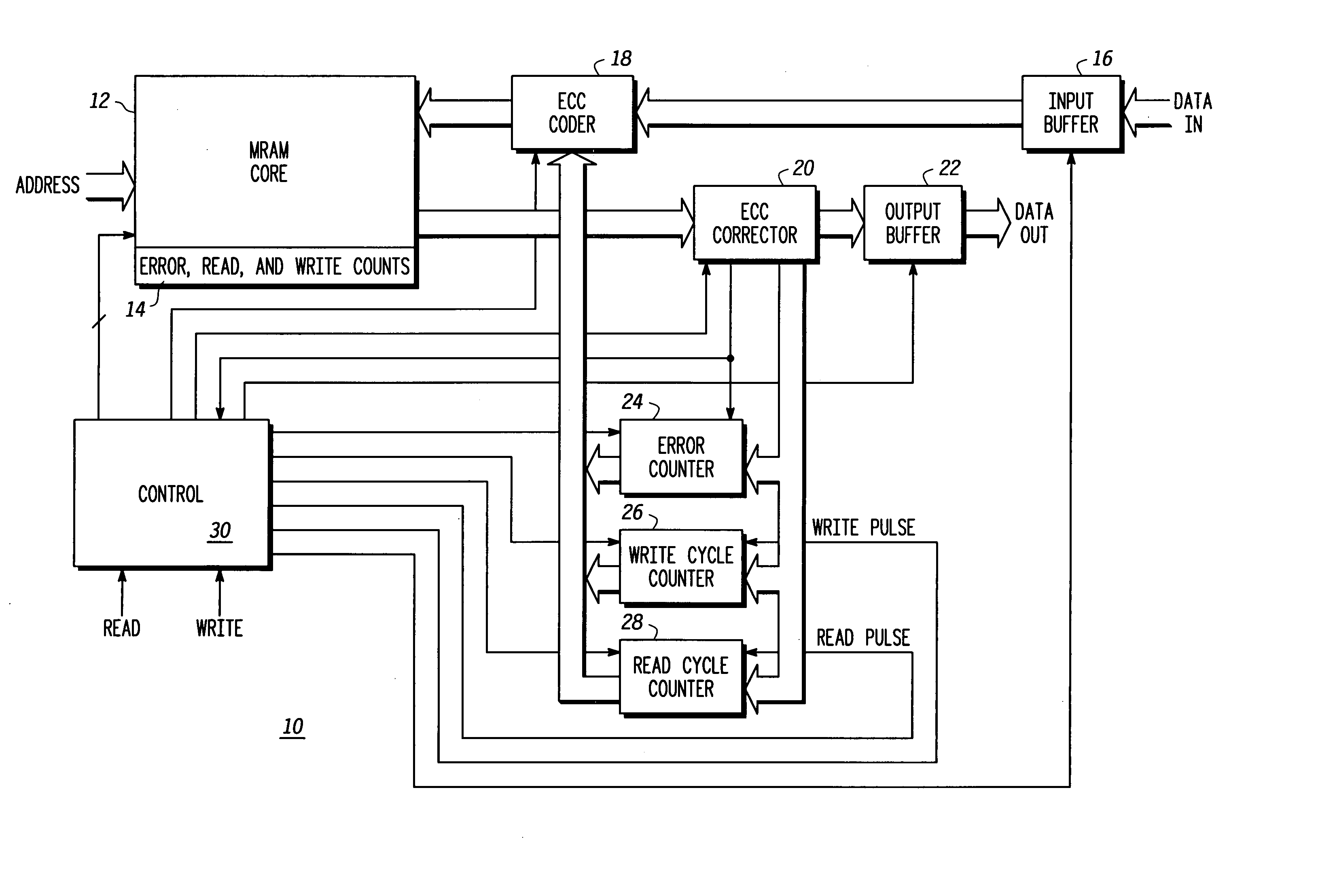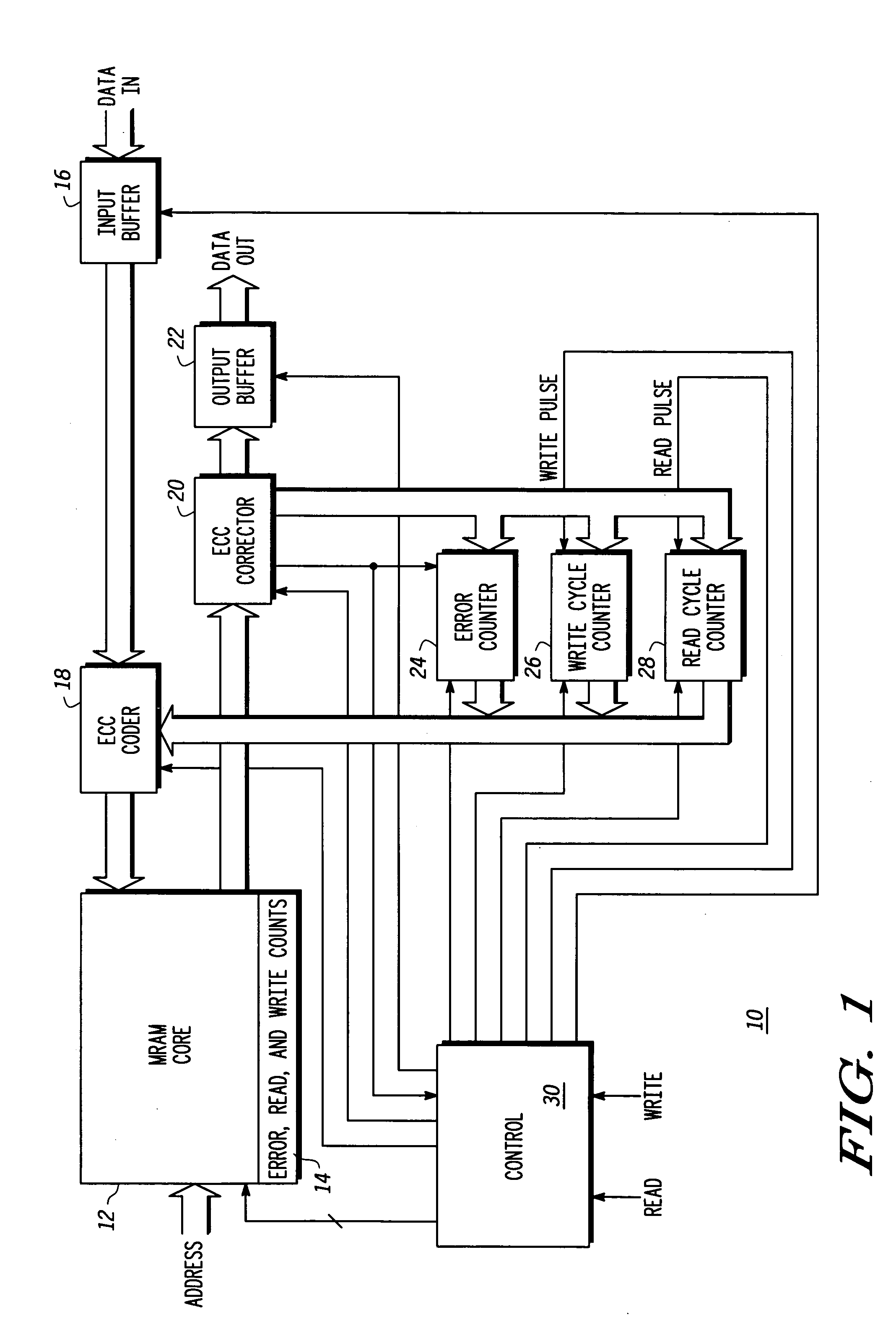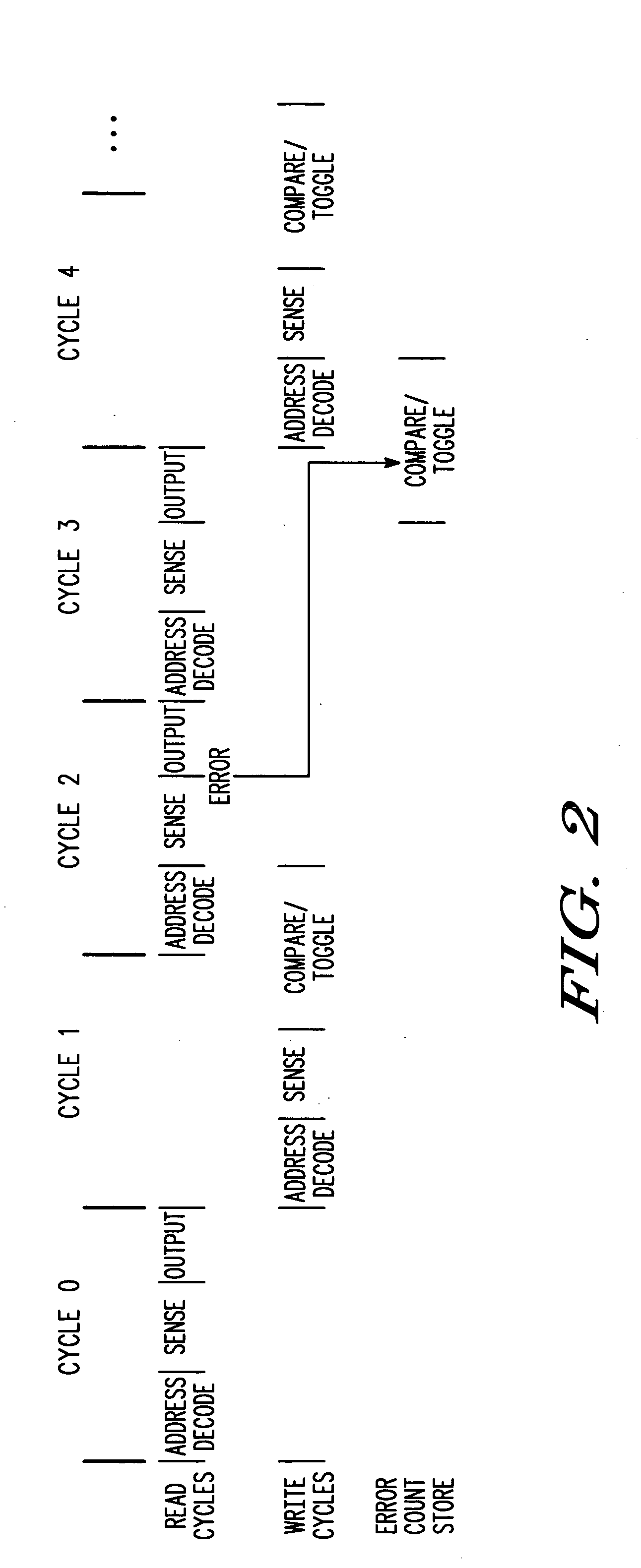MRAM having error correction code circuitry and method therefor
a random access memory and error correction technology, applied in the field of magnetic random access memories, can solve the problems of poor write endurance of flash memory, high voltage requirements, slow program and erase times,
- Summary
- Abstract
- Description
- Claims
- Application Information
AI Technical Summary
Problems solved by technology
Method used
Image
Examples
Embodiment Construction
[0011]FIG. 1 illustrates an embedded memory system 10 having error correction circuitry with a counter for counting detected errors during normal read and write cycle operation. An MRAM core 12 is generally illustrated. It should be understood that the MRAM core 12 contains column and row decoders, read sense amplifiers and write drivers that are not specifically illustrated. The MRAM is accessed by an address bus that receives an address value labeled “Address”. The MRAM core 12 also has an error, read and write counts field 14 that is a special memory location for storing error counts, read cycle counts and write cycle counts.
[0012] An input buffer 16 has an input coupled to a bus for receiving input data labeled “Data In”. An output of the input buffer 16 is connected via a bus to an input of an Error Correction Code (ECC) coder 18. An output of the ECC coder 18 is connected to a data input of the MRAM core 12 via a bus. A data output of the MRAM core 12 is connected via a bus t...
PUM
 Login to View More
Login to View More Abstract
Description
Claims
Application Information
 Login to View More
Login to View More - R&D
- Intellectual Property
- Life Sciences
- Materials
- Tech Scout
- Unparalleled Data Quality
- Higher Quality Content
- 60% Fewer Hallucinations
Browse by: Latest US Patents, China's latest patents, Technical Efficacy Thesaurus, Application Domain, Technology Topic, Popular Technical Reports.
© 2025 PatSnap. All rights reserved.Legal|Privacy policy|Modern Slavery Act Transparency Statement|Sitemap|About US| Contact US: help@patsnap.com



